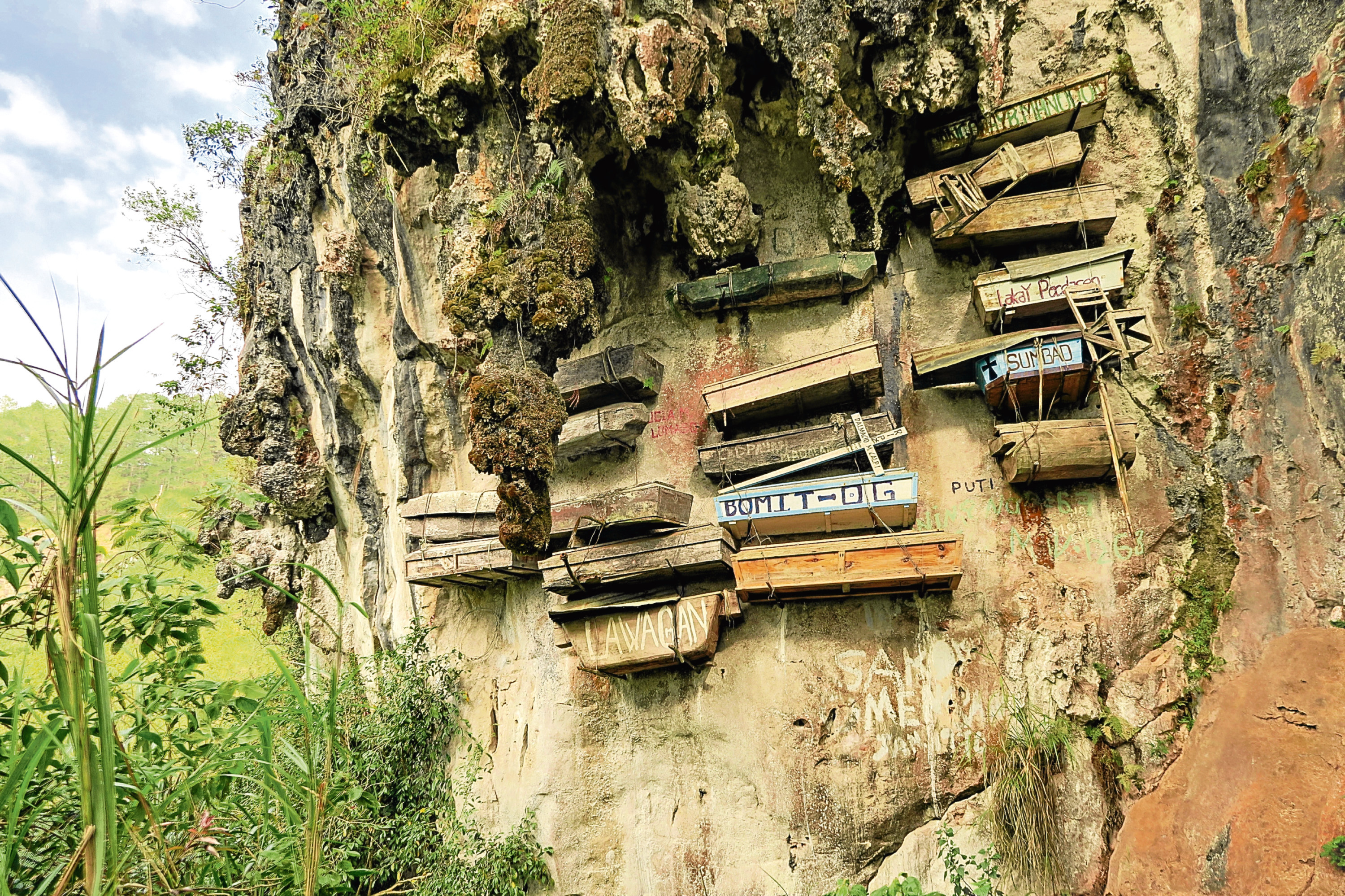
IT must be the most incredible cemetery on Earth — halfway up a cliff face.
Welcome to the Hanging Coffins of Sagada, in the Philippines, where for more than 2,000 years, the locals have placed their deceased in compact wooden coffins like anywhere else.
Except, that is, these ones are then jammed together and left hanging, hoisted up onto brackets that have been driven into the side of the cliff.
The reason is pretty simple and logical — the area around here is prone to flooding, and full of wild animals that would be only too happy to dig down and break the coffins.
Rather than risk either of those unthinkable things happening to their dear departed family and friends, their final resting place is to be found on the side of the cliff, not under the ground.
It also has a more significant, deeply-religious meaning to most locals.
Their beliefs include the hope that the deceased will have a prompt and safe passage to Heaven, and as the Sagada cliffs are closer to paradise than the flooded soil is, they believe it gives them an advantage.
This is why row upon row of pine caskets, some several centuries old, are to be seen hanging from the cliffs at Echo Valley here.
The Igorots, the local people, are very relaxed about death and spend plenty of time thoroughly preparing themselves for it.
In fact, if they are able to do it, the local elders even carve their own coffins!
If you visit Manila, the capital, and fancy coming to pay your respects and see this unique burial ground for yourself, it is a lengthy six-hour trek.
During the rainy season, with that flooded surface, this journey can double, but anyone who comes reports that the sight of it is remarkably-impressive and positive.
Many of us, after all, spend some time going round the graveyards of the famous while on breaks, and cemeteries like Paris’s famed Pere Lachaise see tourists come by to see the final resting place of the likes of Oscar Wilde and Jim Morrison.
So if you are in Manila, you might also like to see its North Cemetery.
As Manila’s biggest graveyard, it is also the most densely-populated in the world, with an estimated 70 to 80 new burials each day.
There are well over a million deceased here already, but what you’ll be most astounded by are the 10,000 who are alive.
Too poor to fund homes of their own, they invested what little they had in a family mausoleum for their late beloved, and now live in the mausoleum alongside their coffins.
As you walk around this incredible place, they will try to sell you candles, snacks, even pre-paid phone cards.
There’s a karaoke machine in one crypt, where you can sing the latest hits for a few pesos!
Places like this bring home how amazing it is that different cultures treat death so differently.
It is, after all, as inevitable as taxes, for all of us, whether we’re rich or poor.
READ MORE
Karaoke-loving grandad organised juke box coffin for his funeral
Video: Car fanatics hope to set new world record for fastest motorised COFFIN

Enjoy the convenience of having The Sunday Post delivered as a digital ePaper straight to your smartphone, tablet or computer.
Subscribe for only £5.49 a month and enjoy all the benefits of the printed paper as a digital replica.
Subscribe